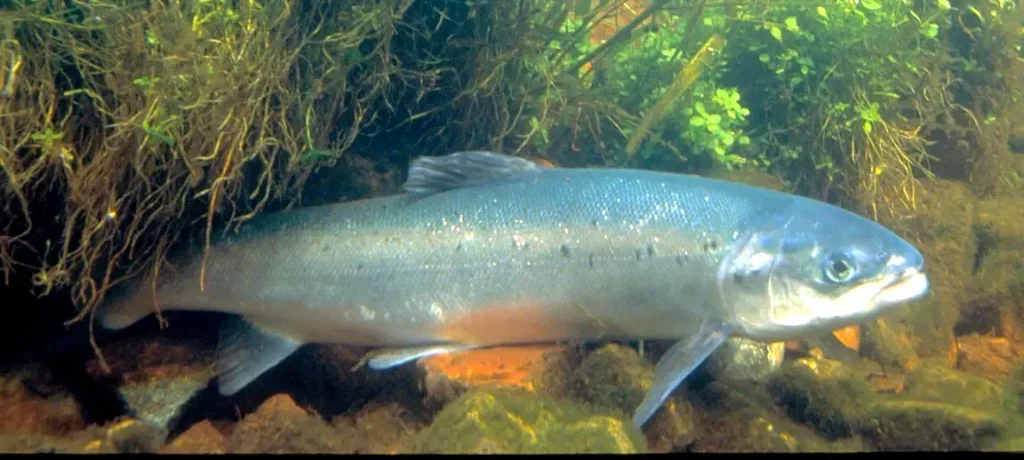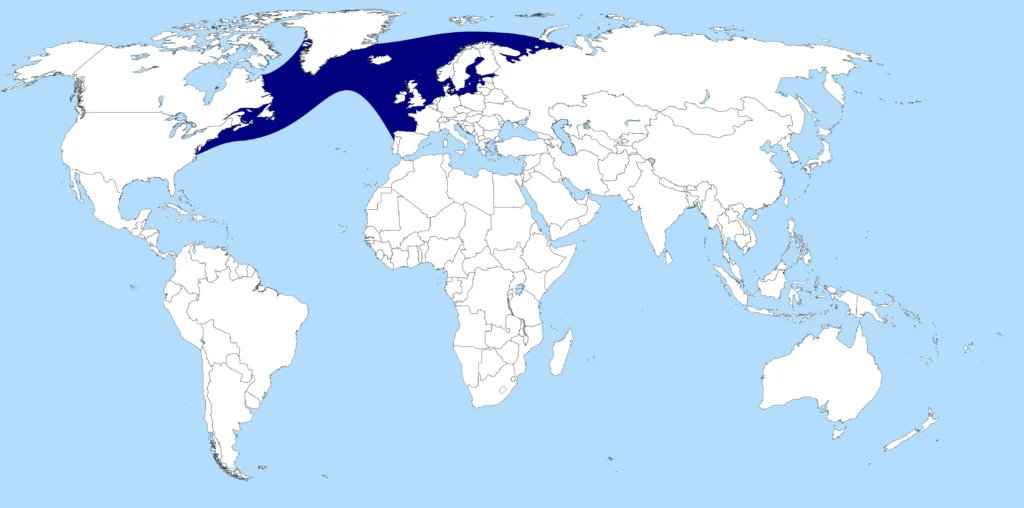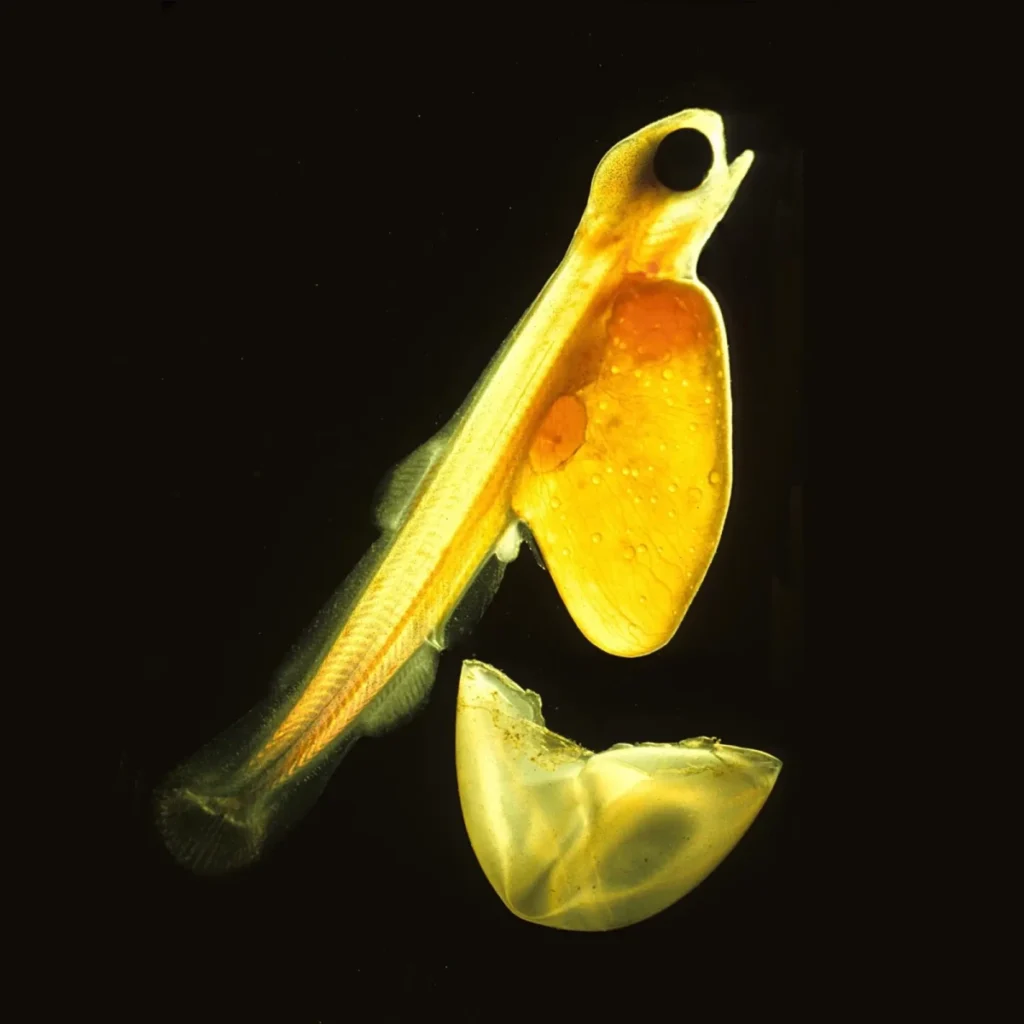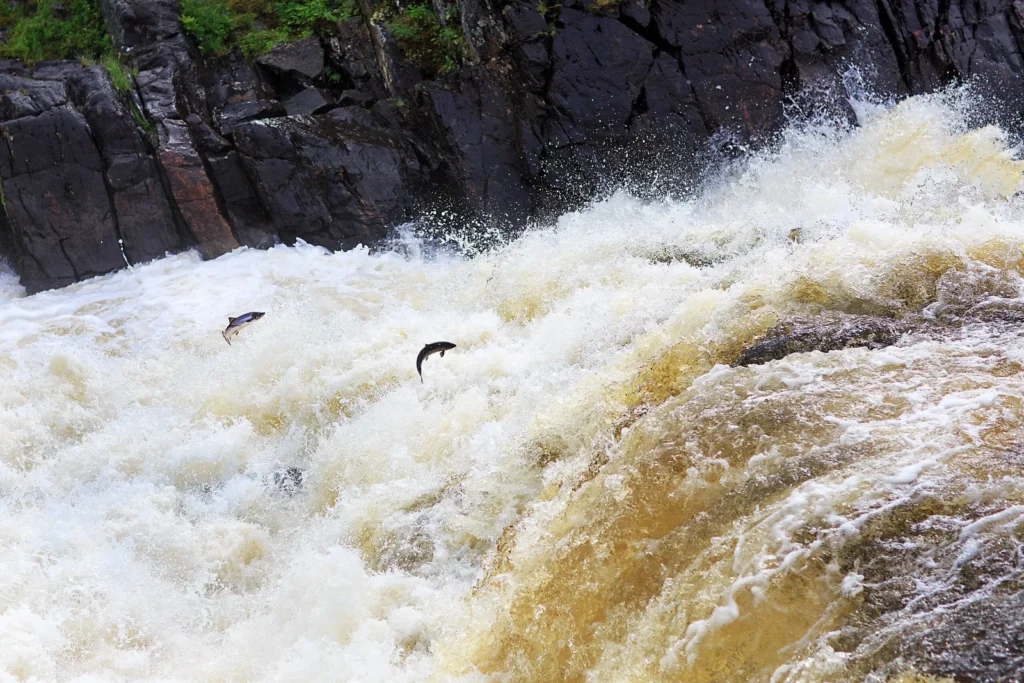Atlantic Salmon (Salmo salar), also known as european salmon or real salmon, is one of the most valuable and well-known commercial fish in the world. Its unique life cycle, which includes migration between fresh water and the ocean, makes this fish exceptional among other species.
🔹 Why is Atlantic salmon unique?
✔ Anadromous view - it is born in rivers, matures in the ocean, and then returns to spawn in the same river
✔ One of the most important objects of fishing and aquaculture
✔ It has a high nutritional value and rich Omega-3 content.
✔ It is known for its ability to overcome strong currents and even waterfalls
✔ One of the symbols of clean rivers and ecological balance
Atlantic salmon is not just a valuable fish, but a real natural wonder that delights scientists, fishermen and gourmets around the world.

Scientific classification
🔬 Taxonomy of Atlantic salmon:
✔ The Kingdom: Animals (Animalia)
✔ Type: Chordal (Chordata)
✔ Class: Lucheperi pisces (Actinopterygii)
✔ Row: Salmonoid (Salmoniformes)
✔ Family: Salmon products (Salmonidae)
✔ Gender: Salmo
✔ View: Salmo salar
📌 Interesting!
Atlantic salmon is the only representative of the genus Salmo, which is anadromous, unlike Pacific salmon (Oncorhynchus) that die after spawning.
Description and anatomy
🔹 Appearance:
✔ The body is streamlined, torpedo-shaped - perfectly adapted for fast swimming
✔ Silvery scales, in young individuals-with black spots
✔ Dorsal fin is short, and the adipose fin is soft
✔ The head is elongated, the oral apparatus is well developed
✔ Long caudal fin, which helps you maneuver in strong currents
🔹 Sizes:
✔ Length: on average 70-100 cm, the largest individuals-k 150 cm
✔ Weight: from 3 to 20 kg, record copies-over 40 kg
✔ Life span: 5-13 years old, in nature usually 6-8 years old
📌 Interesting!
The largest recorded Atlantic salmon weighed 46.8 kg and it was caught in Scotland.

Range and habitat
🌍 Where does Atlantic salmon live?
✅ Atlantic Ocean and freshwater rivers of the Northern Hemisphere
• Europe: rivers of Scandinavia, Iceland, Britain, France, Spain, and Russia
• North America: coast of Canada, USA (Maine)
• Greenland and the Faroe Islands
🔹 Living environment:
✔ It spawns in cold, clear freshwater rivers with rocky bottoms.
✔ Adults migrate to the northern Atlantic Ocean
✔ Prefers water temperature from 4 to 12°C
📌 Interesting!
Atlantic salmon is able to overcome waterfalls up to 3 meters high during the spawning migration.
Life cycle and reproduction
🔹 Life stages:
1️⃣ Caviar - laid by the female on the river bottom in the autumn-winter period
2️⃣ Fry ("parr") - live in the river for 1-5 years
3️⃣ Smolts - young individuals migrating to the ocean
4️⃣ Adult salmon ("Gruner”)" - after 1-4 years at sea, returns to the river to spawn
5️⃣ Post-spawning individuals (”Celts") - exhausted, some of them survive and return to the ocean
📌 Interesting!
Unlike Pacific salmon, Atlantic salmon it can spawn several times during his lifetime.
Nutrition and lifestyle
🔹 What does Atlantic salmon eat?
✅ In the river: insect larvae, small crustaceans, algae
✅ In the ocean: herring, capelin, krill, squid, small fish

🔹 Behavior features:
✔ Fast and strong swimmer - can reach speeds up to 30 km / h
✔ Well-oriented in space, finding native rivers to spawn in
✔ Has excellent eyesight and sense of smell
📌 Interesting!
Salmon is able to navigate by the Earth's magnetic field and chemical composition of water.

Salmon and man
🔹 Main threats:
❌ Illegal fishing and poaching
❌ Pollution of rivers and destruction of spawning grounds
❌ Global warming and changing sea currents
⚠ Population status:
🔸 In the wild – decreases due to industrial catch
🔸 Grown in aquaculture – 98% of the global salmon market
🔹 Human Value:
✔ High in Protein, Omega-3, Vitamins D and B12
✔ A popular product in cooking - salmon is used in sushi, steaks, smoked and pickled dishes
📌 Interesting!
Norway, Canada and Chile – the three largest producers of aquaculture salmon in the world.
Conclusion
🐟 Atlantic salmon is not only a valuable commercial fish, but also an amazing creature that can travel thousands of kilometers in search of its birthplace.
🌍 Conservation of wild salmon is an important step in protecting the world's river ecosystems and biodiversity.
📢 Have you tried real wild Atlantic salmon? How does it differ from aquaculture? Share your impressions! 😋